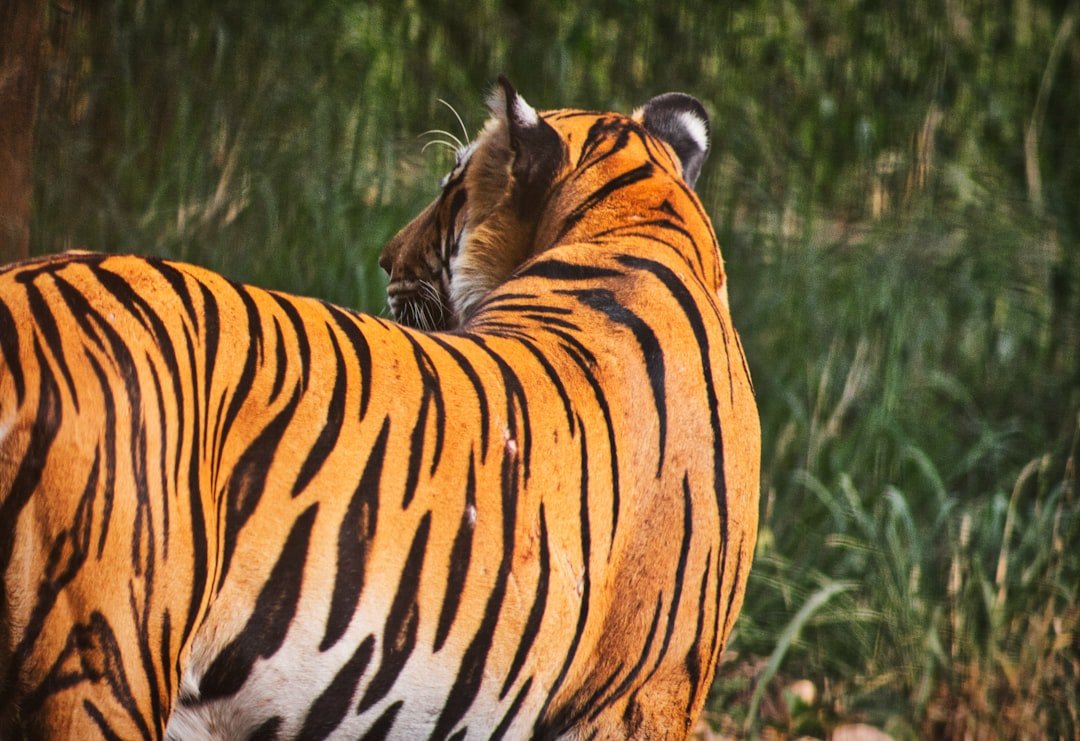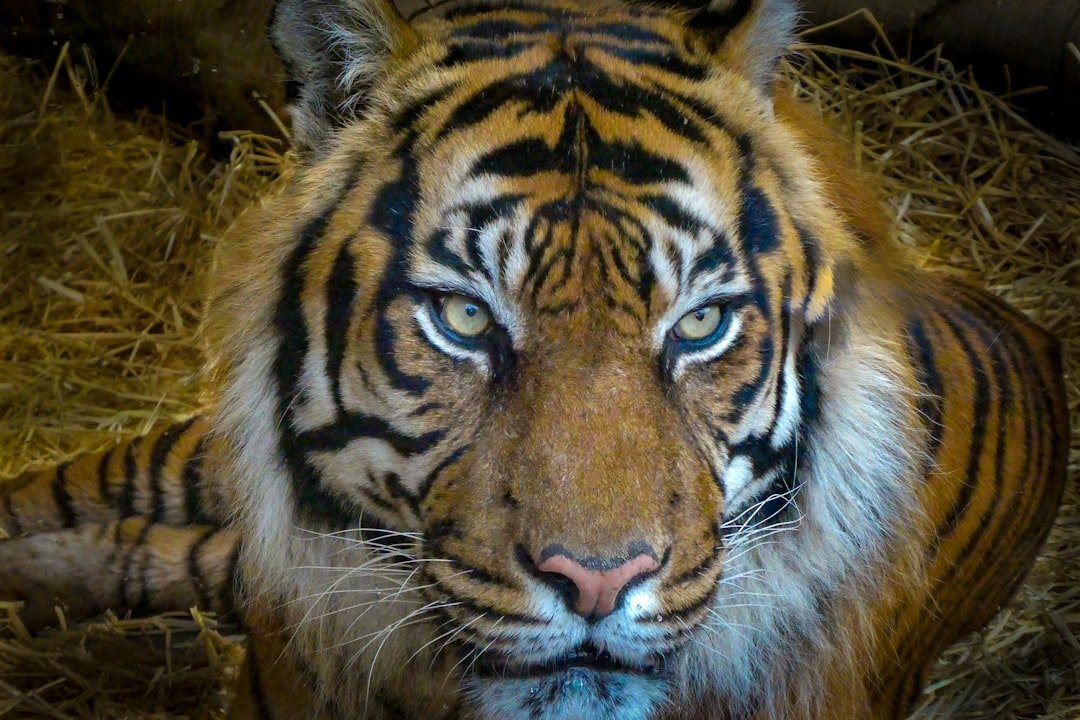Picture this: you’re standing in a forest preserve watching a magnificent tiger emerge from the shadows. What you’re witnessing isn’t just one of nature’s most powerful predators – you’re looking at a walking work of art that carries one of the most complex biological puzzles on Earth. Every stripe on that tiger’s body tells a story written in the language of genetics, development, and evolution. And here’s the mind-blowing part: those stripes are as unique as your fingerprint, created by processes so intricate that scientists are still unraveling their secrets.
The Genetic Blueprint Behind Every Stripe

Genetics play a major role in the formation of tiger stripes. The genes responsible for the pigmentation of a tiger’s fur are passed down from its parents, and variations in these genes can result in different patterns of stripes. Think of it like a complex recipe where each parent contributes their own ingredients, but the final dish always turns out differently.
Scientists have discovered that unique mutations in the Taqpep gene play crucial roles in determining stripe patterns across different feline species. What’s fascinating is that tiger cubs have the same pattern of stripes as their parents, yet no two individuals ever share identical markings. This genetic inheritance creates endless variations within the family tree, ensuring each tiger carries its own distinctive signature.
How Stripes Form During Development

The magic happens long before a tiger takes its first breath. The formation of a tiger’s stripe patterns begins early in its embryonic development. These patterns arise from a complex interplay of genetic instructions and developmental processes. It’s like watching an invisible artist paint on a blank canvas, following rules we’re only beginning to understand.
The formation of these stripes involves specific cells called melanocytes, which produce melanin, the pigment responsible for hair and skin color. During development, these pigment-producing cells migrate through the developing embryo, creating the foundation for what will become the tiger’s iconic coat. This underlying pigmentation of the skin dictates where the darker and lighter hairs will grow, creating the consistent striped appearance.
The Turing Pattern Mystery

In 1952, a brilliant mathematician named Alan Turing proposed a theory that would revolutionize how we think about biological patterns. He put forward the idea that regular repeating patterns in biological systems are generated by a pair of morphogens that work together as an ‘activator’ and ‘inhibitor’. Imagine two opposing forces locked in a constant dance – one trying to create stripes, the other trying to stop them.
Researchers from King’s College London have provided the first experimental evidence confirming a great British mathematician’s theory of how biological patterns such as tiger stripes or leopard spots are formed. However, recent research suggests the reality might be even more complex. Contrary to Turing’s theory, a single gradient of proteins does not have sufficient power to form the same body plan in each member of a species; however, if there are multiple gradients that work against each other, then the system becomes robust enough for normal development.
Why Every Tiger is a Unique Masterpiece

This is why no two tigers have the same pattern of stripes. The combination of genetic variation and developmental complexity ensures that each tiger emerges as a one-of-a-kind individual. Patterns as unique as fingerprints may be created by varying the stripes’ width, length, and density. Tigers can vary greatly in the size and boldness of their stripes. The beautiful mosaic pattern that results from the varying distances between the stripes covers their entire bodies.
What makes this even more remarkable is that from the moment of birth, a tiger’s stripes are fully formed and remain unchanged throughout its life. Unlike human fingerprints which can be altered by injury or wear, a tiger’s stripe pattern serves as a permanent identification card that never changes.
Stripes That Extend Beyond Fur

Here’s something that might surprise you – tiger stripes aren’t just painted on their fur. The stripes are not only on the tiger’s fur but are also imprinted on their skin. If you could somehow shave a tiger (please don’t try this at home!), you’d still see the distinctive pattern etched into their skin like a natural tattoo.
Morphological examination categorizes tiger hairs into long, straight guard hairs or short, curled zigzag underhairs. Different tiger coat color variants exhibit varying patterns in hair composition with predominantly zigzag hairs, which predominantly contribute to pelage coloration. This intricate hair structure adds another layer of complexity to the tiger’s appearance, creating depth and richness in their coat patterns.
The Evolutionary Purpose of Stripes

Tiger stripes serve a significant evolutionary purpose, aiding in their survival as apex predators. These stripes provide effective camouflage, allowing tigers to blend seamlessly into their natural environments. This form of concealment is known as disruptive coloration, where the patterns break up the animal’s outline, making it difficult for prey to recognize their form.
Many of the tiger’s prey animals, such as deer, possess dichromatic vision, meaning they perceive a more limited range of colors compared to humans. To these animals, the tiger’s orange fur appears green, allowing it to seamlessly merge with the verdant background. It’s nature’s ultimate invisibility cloak, perfectly designed for stealth hunting in dappled forest light.
Rare Genetic Variations Create Extraordinary Tigers

Sometimes, genetic mutations create truly spectacular variations in tiger stripe patterns. This uncanny widening of a tiger’s black stripes, a rare genetic mutation known as pseudo-melanism, is shared among around 60% of the roughly 50 tigers that roam the Similipal reserve. These “black tigers” showcase how genetic diversity can produce stunning alternatives to the classic orange and black pattern.
The golden tiger, also first sighted in the jungle in India, has a blonde color tone with pale golden fur and red-brown rather than black stripes. The snow white tiger is almost completely white, with faint to nearly nonexistent narrow stripes on the trunk and diluted sepia brown rings on the tail. Each variation tells a story of how small genetic changes can create dramatically different appearances while maintaining the essential tiger blueprint.
Conservation Through Stripe Recognition

Like a human fingerprint, no two tigers have the exact same markings. Because of this, researchers can use stripe patterns to identify different individuals when studying tigers in the wild. This unique characteristic has become a powerful tool in the fight to save tigers from extinction.
Advances in technology have allowed researchers to develop deep convolutional neural networks and algorithms capable of recognizing these patterns from photographs. The use of these technologies isn’t limited to scientific research; they also empower citizen scientists and conservationists in their efforts to protect these majestic creatures. Camera traps scattered throughout tiger habitats capture thousands of images, and sophisticated software can now identify individual tigers with remarkable accuracy.
Technology Meets Tiger Stripes

For every image, the programme demonstrated high accuracy in placing photos of the same individual in top positions, and in the top five positions on every go. This technological breakthrough has revolutionized tiger conservation efforts, making it possible to track individual animals across vast territories without human intervention.
This study also suggests that if copies of camera trap images were accumulated in a central database, an image of a skin that had been taken from one of the tigers represented in that database could be traced within a few minutes to where and when the living animal was last recorded. Such images could be sent from anywhere in the world and would therefore not be restricted to skins located within India. This capability has proven invaluable in combating illegal wildlife trade and tracking poached animals.
The Health Story Hidden in Stripes

Vibrant, well-defined stripes often suggest a robust and healthy tiger, while faded or irregular patterns may signal underlying health issues or genetic factors. These visual cues help researchers and conservationists assess the well-being of tiger populations and monitor individual fitness levels.
Scientists have discovered that stripe patterns can reveal much more than just individual identity. Because younger tigers have more clear and defined patterns that may vary as they develop, the arrangement and size of stripes can indicate a tiger’s age and maturity. Stripes can also indicate individual behavioral tendencies within a social group, such as violence, dominance, or submission. It’s like reading a tiger’s biography written in black and orange.
Conclusion: Nature’s Ultimate Security System

The science of tiger stripes reveals one of nature’s most elegant solutions to identity, camouflage, and survival. From the complex genetic orchestra that conducts their formation in the embryo to the sophisticated technology that now uses them to save species from extinction, tiger stripes represent the perfect marriage of beauty and function.
Every stripe tells a story – of ancient evolutionary pressures, of individual genetic heritage, of adaptation and survival. In a world where tigers face unprecedented threats, their unique patterns have become their greatest ally in the fight for survival. Scientists can now track individual tigers across continents, identify poached skins, and monitor population health all because nature gave each tiger its own unrepeatable signature.
The next time you see a tiger, whether in a zoo, documentary, or wildlife preserve, remember that you’re looking at a living masterpiece – a creature whose very appearance embodies millions of years of evolutionary artistry and modern scientific innovation. How incredible is it that something so beautiful could also be so scientifically profound?




